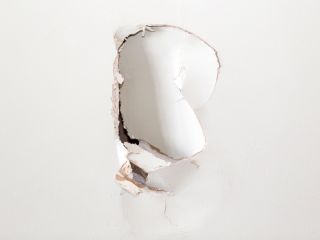
Drywall, often referred to as sheetrock or wallboard, has become a staple material in modern home construction due to its ease of installation and durability. However, like any material, drywall can encounter problems over time. Whether it's small cracks, larger holes, or sagging ceilings, addressing drywall issues promptly and effectively is key to maintaining the appearance and integrity of your home. Below, we explore common drywall repair considerations and tips for ensuring your walls remain in top shape.
Repair by Patching
For small holes, cracks, or minor water damage, drywall patching is an effective repair method. Instead of installing new drywall, minor defects can be addressed with spackling or a fast-setting joint compound. After applying the compound, the area should be sanded and primed for a smooth, professional finish. For larger damage, such as big holes in walls or ceilings, a new piece of drywall may need to be installed, followed by joint taping and finishing. This process involves multiple steps and typically takes a few days to complete.
Minor Defects
Minor defects, such as nail holes, scrapes, and small dents, can easily be fixed using spackling material or joint compound. After filling in the imperfections, the area should be sanded smooth and primed. This ensures a seamless surface ready for painting or further finishing work. Addressing these minor issues early on can prevent them from becoming more significant problems down the road.
Electrical or Plumbing Related Damage
When installing electrical outlets, light fixtures, or making plumbing repairs, holes often need to be cut into drywall. While small holes can be patched using tape or mesh, larger holes require fresh drywall installation. Properly sealing these repairs is crucial for both aesthetics and preventing future damage, such as moisture intrusion.
Ceiling Defects
Sagging ceilings are often the result of poor installation, wear and tear, or even the weight of the drywall itself. In some cases, vibrations or faulty construction can exacerbate the problem. To prevent sagging, builders typically use additional support, such as strapping screws or nails, during installation. If sagging does occur, it is important to consult a professional to assess the cause and recommend the best course of action.
For homes in cold climates, moisture-related sagging can occur when construction is not sequenced correctly. Proper coordination of insulation and ceiling installation can help avoid these issues. Ensuring moisture control and ventilation is vital to maintaining your ceilings in both warm and cold climates.
Damaged or Torn Drywall
Removing wallpaper from unprepared walls can often lead to torn drywall, especially when the original installation did not include a proper sealer. This can create a significant mess and require extensive repairs. To avoid damage, it's important to properly seal walls before wallpaper installation and carefully remove the wallpaper using the right tools and techniques. If damage does occur, repairs should be made promptly to restore the drywall surface.
Drywall damage can disrupt finishing projects, such as painting or wallpaper installation, leading to additional time and costs. Whether you're dealing with minor nail holes or extensive damage, ensuring the drywall is properly repaired before proceeding with the finishing steps is critical for achieving a flawless look.
Additional Drywall Repair Tips
- Moisture Control: One of the leading causes of drywall damage is moisture. To prevent mold and water damage, ensure that your home is properly ventilated and that leaks are addressed immediately. Moisture-resistant drywall, also known as green board, can be installed in high-humidity areas like bathrooms and basements.
- Preventing Future Damage: To avoid future damage, consider installing corner guards or bumpers in high-traffic areas where drywall edges are more susceptible to wear and tear. Additionally, using a high-quality primer and paint can help protect drywall surfaces from minor impacts and staining.
- Hiring a Professional: While some drywall repairs can be DIY projects, larger repairs such as ceiling sagging, extensive holes, or moisture-related damage often require the expertise of a professional. Consulting a licensed contractor ensures that the repairs are done correctly and efficiently.
Call to Action:
At Drywall Repair Encino, we specialize in all aspects of drywall repair, from minor patchwork to full-scale ceiling restorations. Our team of experienced professionals is dedicated to providing top-quality service that ensures your walls and ceilings look flawless. Don't let drywall damage disrupt your home. Contact us today for a consultation and discover how we can help restore your drywall to perfection!

